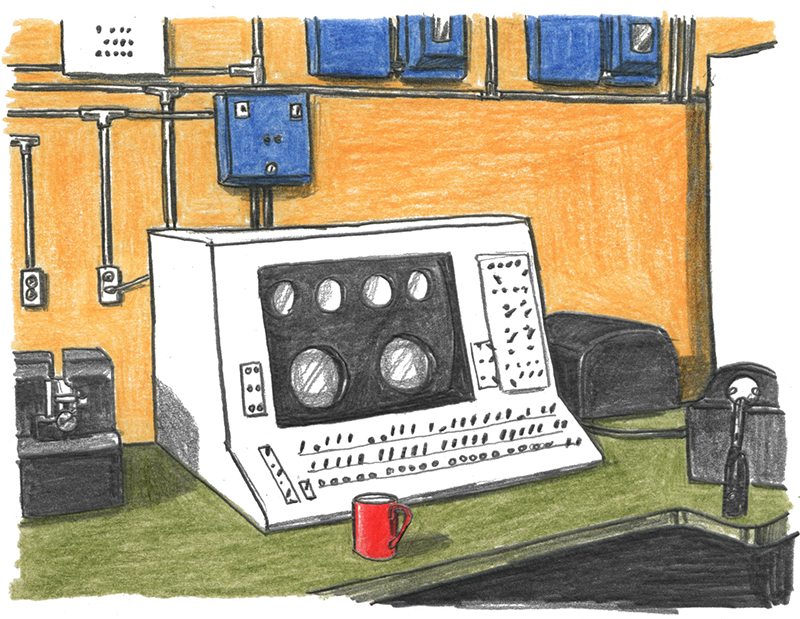By 1949, a massive electronic brain was slowly awakening deep within U of T’s physics building. The room-sized assembly of wires, vacuum tubes and other electronic parts – Canada’s first electronic computer – promised to quickly solve equations a human might take months to crack.
The University of Toronto Electronic Computer Mark I (UTEC) was developed by several grad students, professor V.G. Smith of electrical engineering, and Calvin Gotlieb, the acting director of U of T’s computational centre. “The computer’s great advantage,” Gotlieb told the Globe and Mail in 1949, “is that it saves drudgery … it can do in an instant what would take a trained mathematician days or even years.” (Although UTEC was a major technological leap, today’s smartphones are a trillion times more powerful.)
The project was funded by Canada’s National Research Council and the Defence Research Board to avoid having important computational work – for the country’s military and nuclear labs, for example – sent abroad.
Development proved difficult and slow. Few companies made computer parts and the parts that were available were expensive, so the students often had to design and build their own from scratch. To have something to show for their efforts, the team created a simplified prototype called UTEC Jr., which was functional by 1950.
UTEC Jr. worked well but was frustratingly delicate. Hair static could erase the contents of one of its 800 vacuum tubes; one bad solder among thousands might take days to find. Still, the project helped catapult U of T to the forefront of computer science in Canada, laying the foundation for a department that, decades later, would help lead the development of AI.
The end for UTEC came when a ready-made Ferranti computer became available in Britain. U of T bought it and had it running by 1952. Today, all that remains of Canada’s first computer are a few blueprints, photographs and written descriptions.
Recent Posts
People Worry That AI Will Replace Workers. But It Could Make Some More Productive
These scholars say artificial intelligence could help reduce income inequality
A Sentinel for Global Health
AI is promising a better – and faster – way to monitor the world for emerging medical threats
The Age of Deception
AI is generating a disinformation arms race. The window to stop it may be closing






One Response to “ Canada’s Information Era Began at U of T ”
This is good and important work! Achievements like this and many others (the story of insulin comes to mind) should be made visible to students and applicants in promotional material, so they will feel some pride in their university and treat it with more respect. Too many students these days are eager to blame scientific achievements for all evils committed by mankind, yet too lazy to acquire the education and knowledge that would enable them to use it for good.